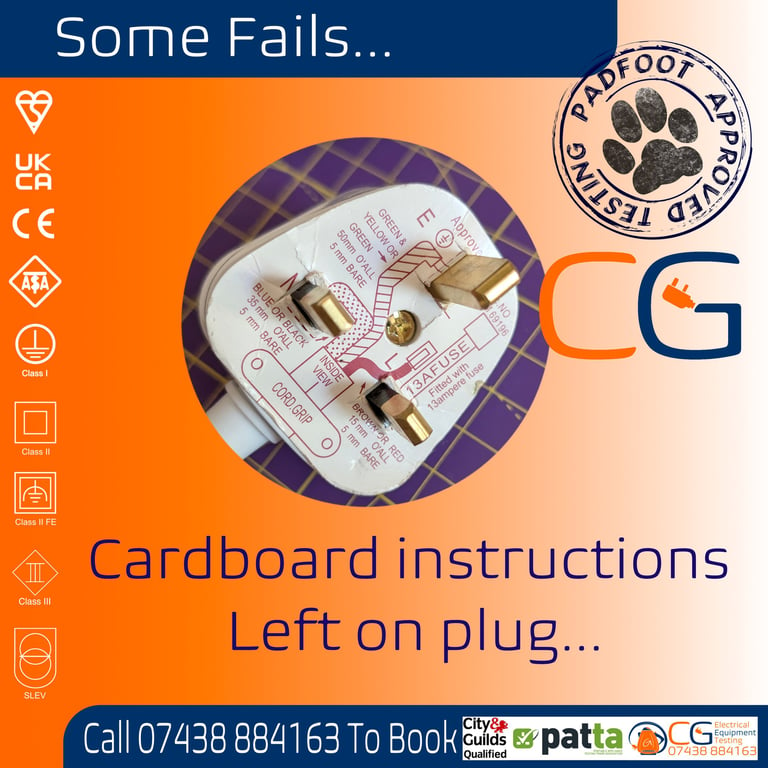Cardboard Wiring Diagrams
Handy little things, but these need to be removed, we see these on our testing jobs, read now to see whats the issue.
ELECTRICAL SAFETY
7/18/20252 min read


Why You Should Never Leave the Cardboard Wiring Diagram On a UK 13A Plug
When wiring or replacing a standard UK 13-amp 3-pin plug, you’ll often find a small cardboard insert nestled on the plug casing. It’s usually printed with a simple wiring diagram showing where to connect the live (brown), neutral (blue), and earth (green/yellow) wires. It’s a helpful guide — but it should never be left on the plug once wiring is complete.
While it might seem harmless — even convenient — leaving the cardboard in place is unsafe and potentially dangerous. Here's why.
1. Fire Hazard
Cardboard is flammable. Plugs can become warm during use, particularly if the device draws high current (e.g., kettles, heaters, or tumble dryers). In the event of a loose connection or electrical fault, the cardboard can ignite, turning a minor issue into a major fire risk. Plugs are designed to be as fire-resistant as possible — and cardboard doesn't belong in that equation.
2. Obstructs a Proper Seal
A our UK plugs and sockets have been designed to a high standard, whislt the cardboard may only be a few mm it can be enough to not fully secure your plug into the socket. Plug pins have been designed to meet a certian size and reach a certain depth into the socket, this extra layer could cause issues with the three contacts of the plug not fully meeting inside, this could cause reduced levels of protection, especially with the Earth pin.
3. Moisture Absorption
Cardboard absorbs moisture — even just ambient humidity in the air. On an electrical plug, any moisture is bad news. It can contribute to corrosion of the terminals or act as a conductor if damp enough, increasing the risk of shock or malfunction.
4. No Longer Needed Once Wired
The only reason that cardboard insert is there is to guide safe wiring. Once the plug is correctly wired and checked, the diagram has served its purpose. Keeping it on serves no functional role and introduces risk. If you need a wiring reference in the future, take a photo or keep a separate guide — but not on the plug.
5. Bad Habit That Can Spread
If you're teaching someone else how to wire a plug — perhaps your child, a student, or a colleague — and you leave the cardboard in place, they may assume it's normal practice. That can perpetuate unsafe wiring habits across households, schools, and workplaces. Best to set the standard right: wire carefully, check thoroughly, and remove the insert.
A Safer Plug Is a Better Plug
Wiring a UK 3-pin plug isn’t difficult, but it needs to be done with care and respect for safety. Double-check your wire positions (brown to live, blue to neutral, green/yellow to earth), tighten all screws properly, ensure the cable grip is used and working and once everything is in place — remove the cardboard diagram before closing the plug.
That small act could prevent a future hazard.
Stay safe, stay wired right
Things we see during our testing...
Reliable appliance testing across South Wales.
© 2025. All rights reserved.






